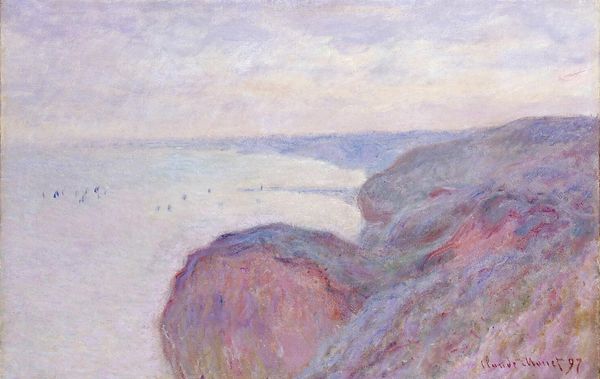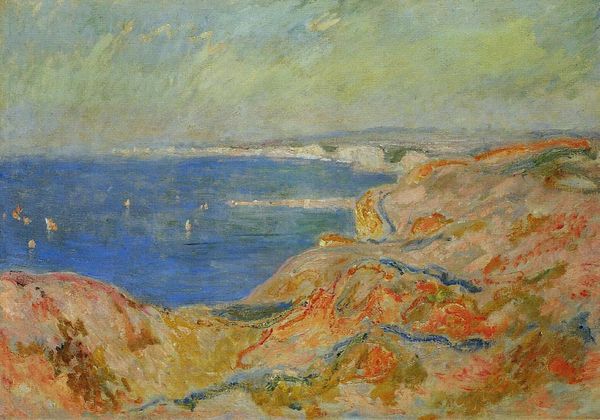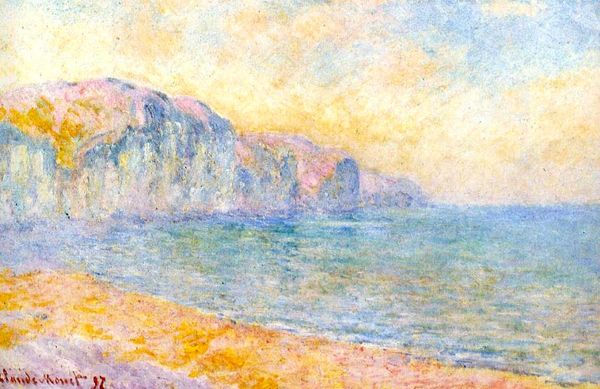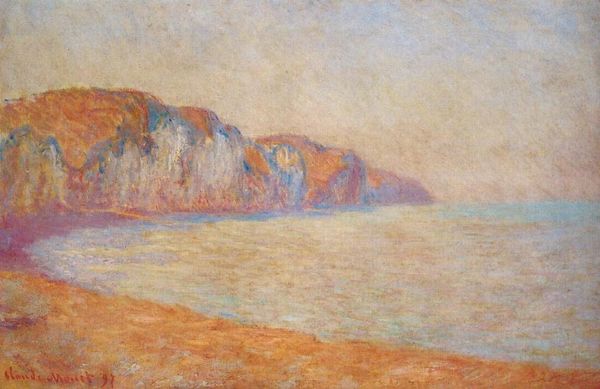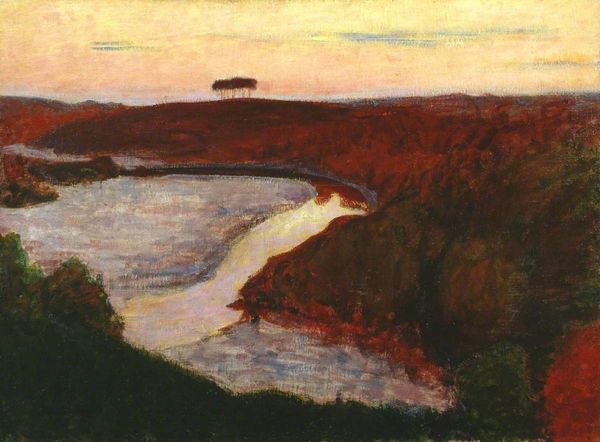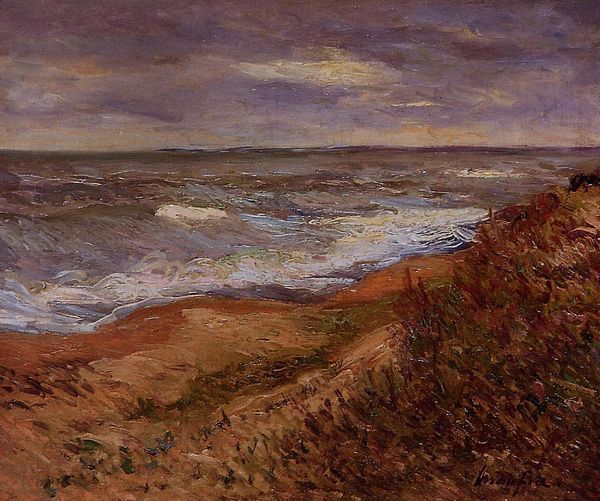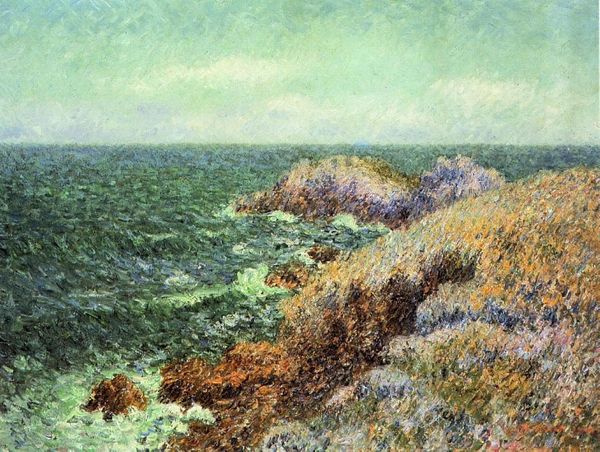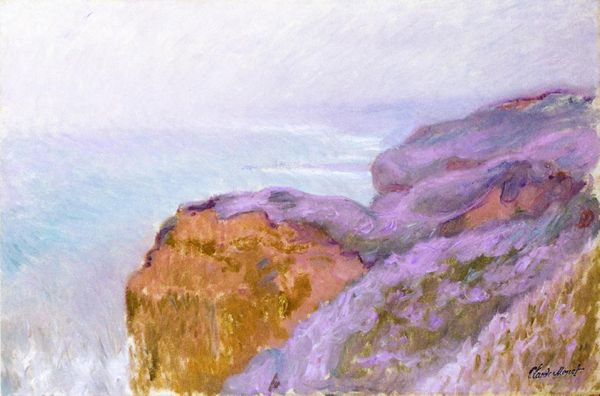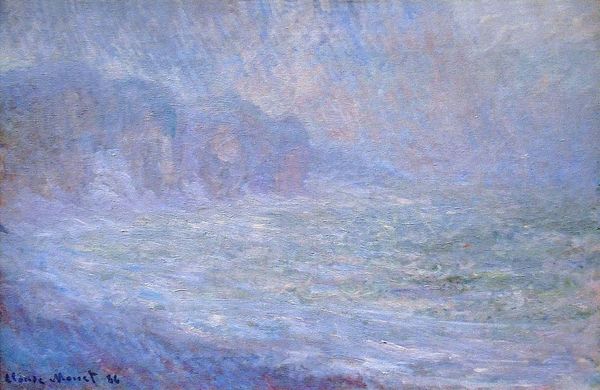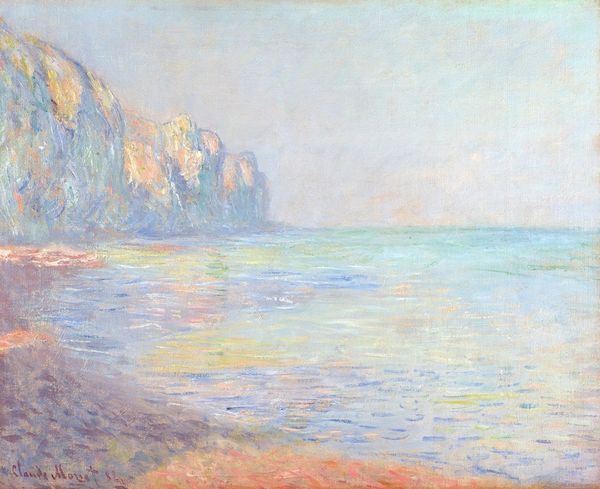
Copyright: Public domain
Claude Monet painted this vibrant landscape of the Cliff near Dieppe with oil on canvas. Monet and his contemporaries were seeking to capture fleeting moments in time, often working 'en plein air' to directly engage with nature's ever-changing conditions. Monet's landscapes can be viewed as a response to the rapidly industrializing world, offering solace in the beauty of the natural world, yet this beauty is also deeply entwined with issues of class and privilege. Impressionism catered to the bourgeoisie, who had the leisure and resources to appreciate art for art's sake. The vibrant colors and loose brushstrokes, while seemingly apolitical, represent a shift in artistic values towards personal expression. Consider how Monet, as a man of his time, might have perceived the relationship between humanity and nature, and the emotional resonance of the artwork. "I wish I had been born blind and then one day had my sight given to me so that I could see the sunrise as you do," he said, revealing an intensity of feeling for the sensory experience. In this landscape, Monet invites us to consider our own place in the world, and how we, too, can find moments of peace and reflection amidst the chaos of modern life.
Comments
No comments
Be the first to comment and join the conversation on the ultimate creative platform.

